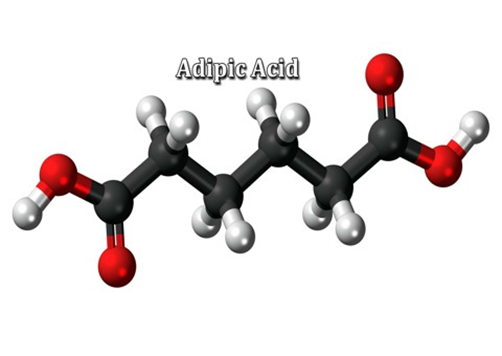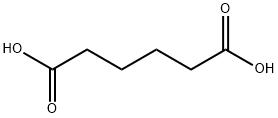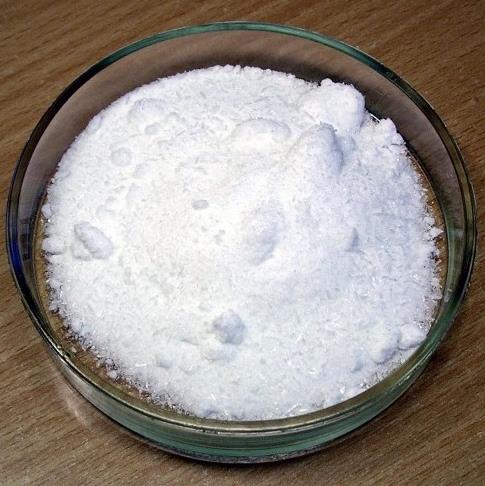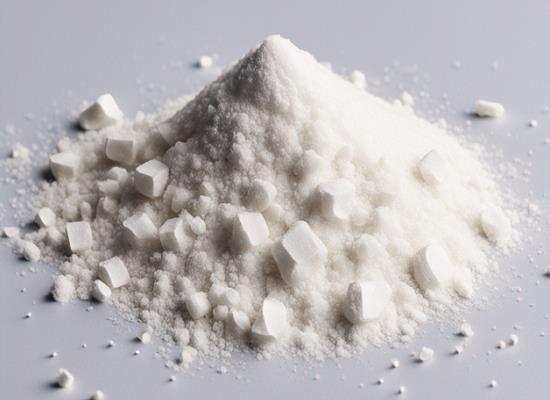Adipic acid: Physicochemical properties, production host screening and toxicity
Adipic acid is an odourless, white crystalline powder with a wide range of roles in chemical generation and manufacture. It can be used as a polymer monomer in the production of nylon 6-6, polyurethane, plastics and foams. Adipic acid is also used as an acidifier, buffer, gelling aid, chelating agent, biocide, plasticiser and pH regulator in various industries such as food, pesticides, dyestuffs, textiles, and pharmaceuticals.

Physicochemical properties of Adipic acid
Molecular Formula:
C6H10O4
Molecular Weight: 146.14 g/mol
Iupac name: hexanedioic acid
Density: 1.36 g/cm³
Melting point: 152.1 °C
Solubility: slightly soluble in water and soluble in alcohol and acetone
Adipic acid tolerance screening for potential adipic acid production hosts
Biobased processes for the production of adipic acid are of great interest to replace the current environmentally detrimental petrochemical production route. No efficient natural producer of adipic acid has yet been identified, but several approaches for pathway engineering have been established. Research has demonstrated that the microbial production of adipic acid is possible, but the yields and titres achieved so far are inadequate for commercialisation.
Results: Screening of yeasts and bacteria for tolerance to adipic acid was performed in microtitre plates, and in agar plates for A. niger in the presence of adipic acid over a broad range of concentration (0-684 mM). As the different dissociation state(s) of adipic acid may influence cells differently, cultivations were performed with at least two pH values. Yeasts and A. niger were found to tolerate substantially higher concentrations of adipic acid than bacteria, and were less affected by the undissociated form of adipic acid than bacteria. The yeast exhibiting the highest tolerance to adipic acid was Candida viswanathii, showing a reduction in maximum specific growth rate of no more than 10-15% at the highest concentration of adipic acid tested and the tolerance was not dependent on the dissociation state of the adipic acid.
Conclusions: Tolerance to adipic acid was found to be substantially higher among yeasts and A. niger than bacteria. The explanation of the differences in adipic acid tolerance between the microorganisms investigated are likely related to fundamental differences in their physiology and metabolism. Among the yeasts investigated, C. viswanathii showed the highest tolerance and could be a potential host for a future microbial cell factory for adipic acid.
TOXICITY OF ADIPIC ACID
Adipic acid has very low acute toxicity in rats with an LD50> 5000 mg/kg. Adipic acid produced mild to no skin irritation on intact guinea pig skin as a 50% concentration in propylene glycol; it was not a skin sensitizer. Adipic acid caused mild conjunctival irritation in washed rabbit eyes; in unwashed rabbit eyes, there was mild conjunctival irritation, minimal iritis, but no corneal effects. Adipic acid dust may irritate the mucous membranes of the lungs and nose. In a 2-year feeding study, rats fed adipic acid at concentrations up to 5% in the diet exhibited only weight loss. Adipic acid is not genetically active in a wide variety of assay systems. Adipic acid caused no developmental toxicity in mice, rats, rabbits, or hamsters when administered orally. Adipic acid is partially metabolized in humans; the balance is eliminated unchanged in the urine. Adipic acid is slightly to moderately toxic to fish, daphnia, and algae in acute tests.
References:
[1] EMMA KARLSSON Lisbeth O Valeria Mapelli. Adipic acid tolerance screening for potential adipic acid production hosts.[J]. Microbial Cell Factories, 2017. DOI:10.1186/s12934-017-0636-6.
[2] KENNEDY G. TOXICITY OF ADIPIC ACID[J]. Drug and Chemical Toxicology, 2002. DOI:10.1081/DCT-120003259.
You may like
Related articles And Qustion
Lastest Price from Adipic acid manufacturers

US $50.00/kg2025-08-29
- CAS:
- 124-04-9
- Min. Order:
- 500kg
- Purity:
- 99.5%
- Supply Ability:
- 100 ton per month

US $1.00/kg2025-04-21
- CAS:
- 124-04-9
- Min. Order:
- 1kg
- Purity:
- 99%
- Supply Ability:
- 10 mt




